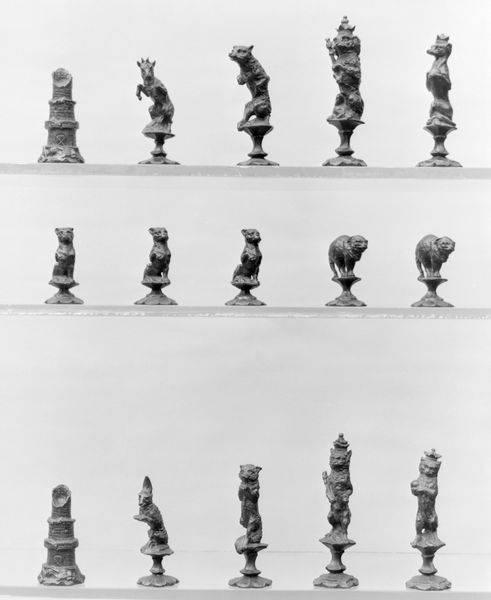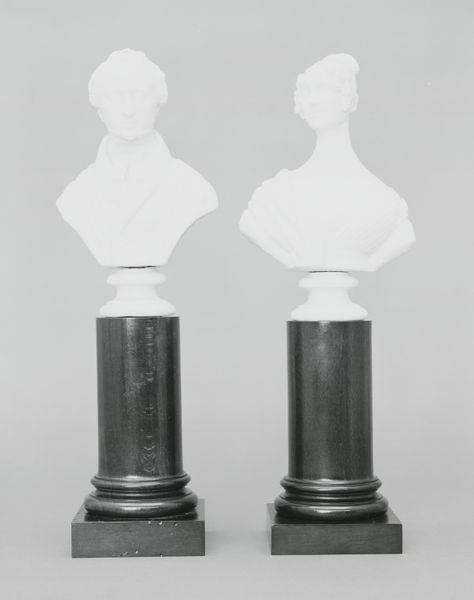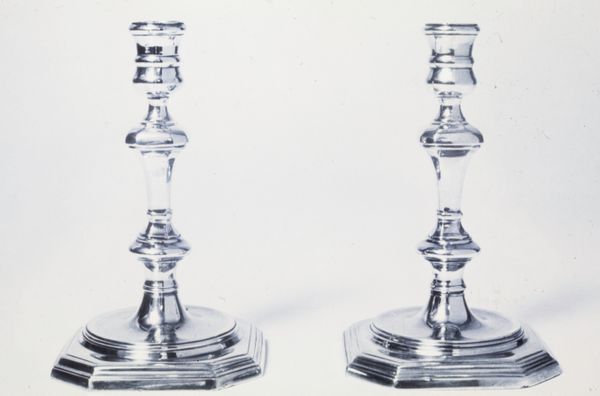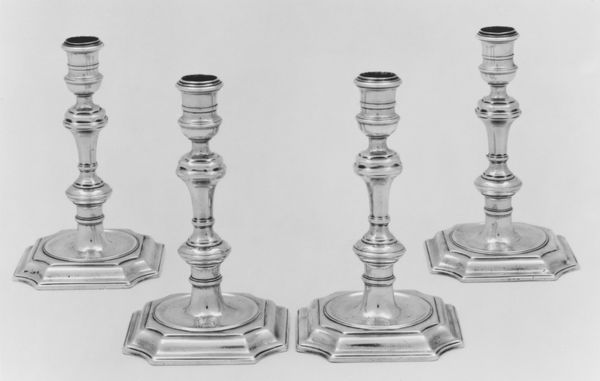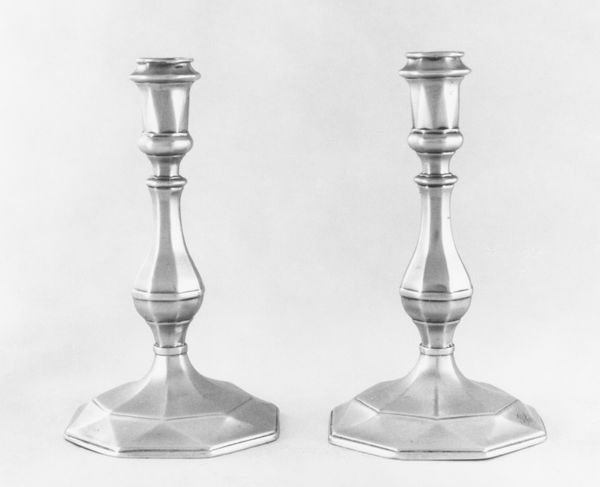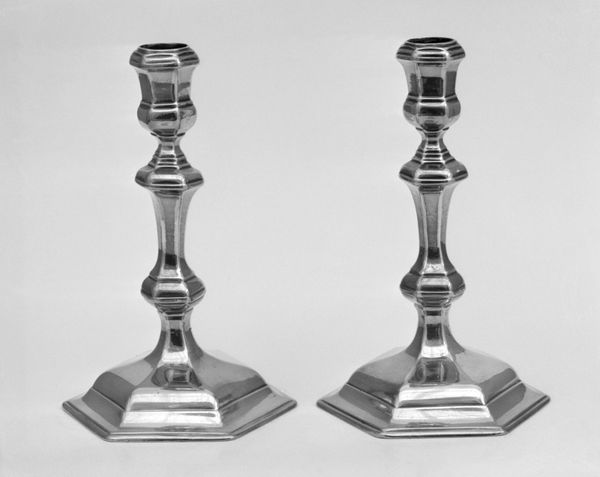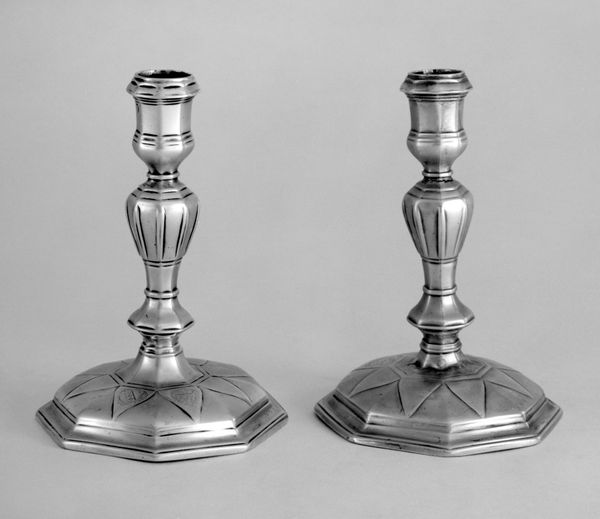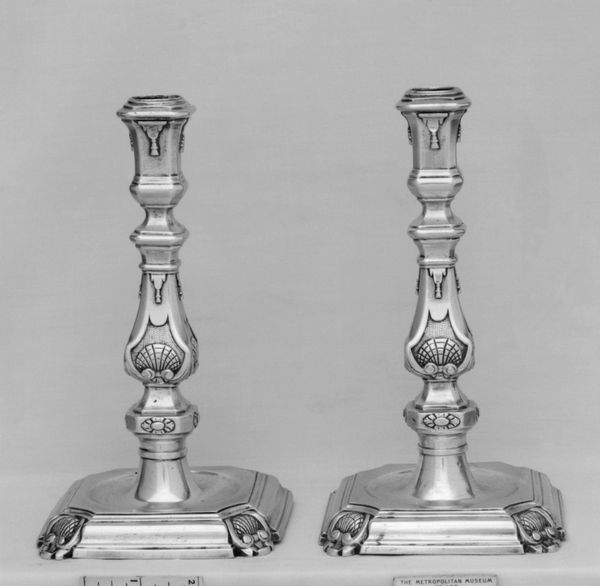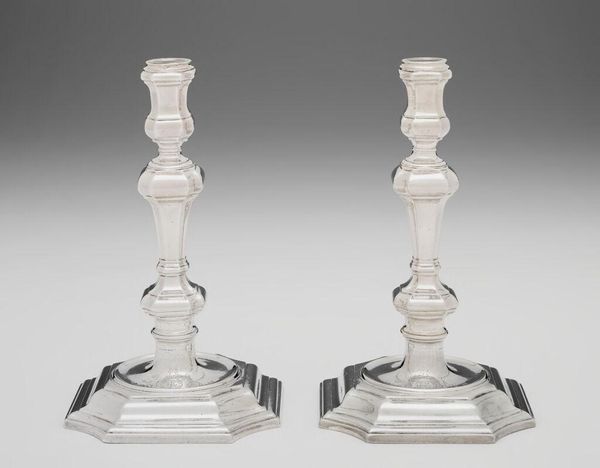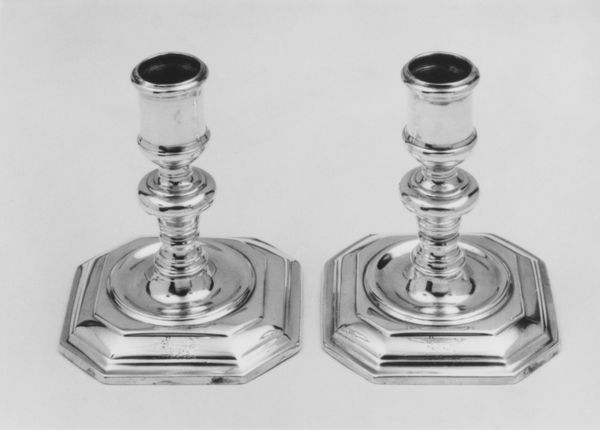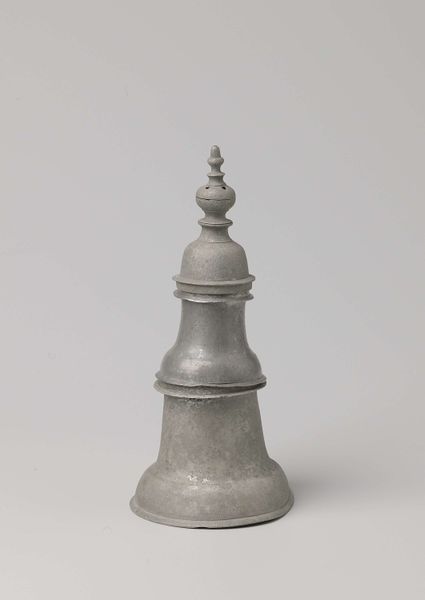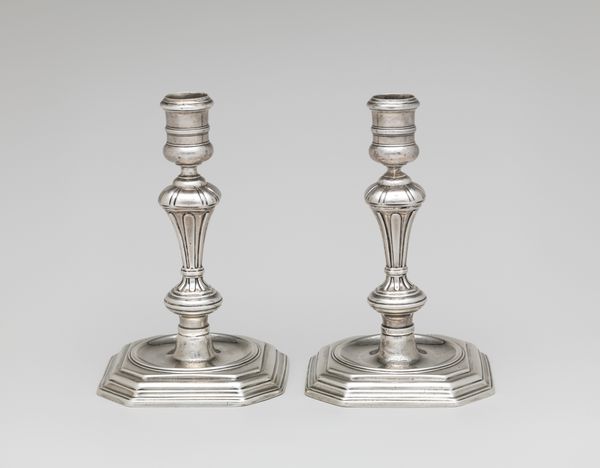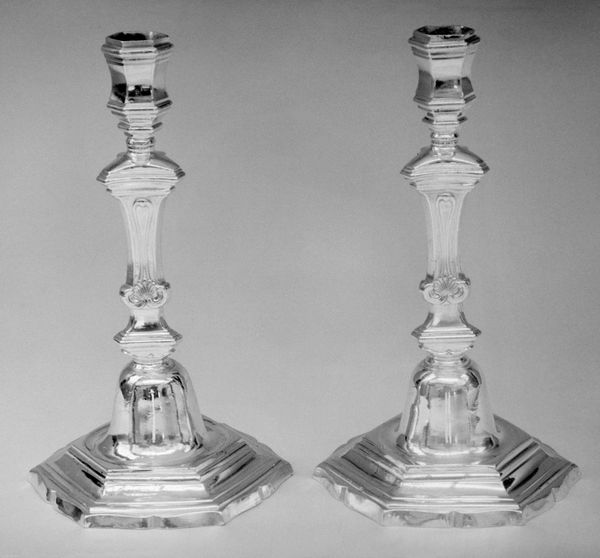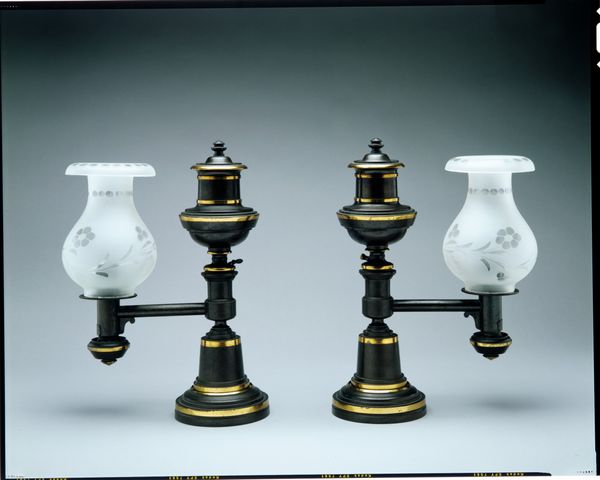
silver, sculpture
#
silver
#
baroque
#
sculpture
#
sculpture
#
decorative-art
Dimensions: Height (each): 4 3/4 in. (12.1 cm)
Copyright: Public Domain
Editor: Here we have a "Pair of Tapersticks" made in 1718-1719 by Thomas Folkingham. They're crafted from silver and strike me as quite austere, despite their Baroque style. How do you read this piece, especially considering the socio-political climate of early 18th century England? Curator: That austerity you perceive is interesting. Consider the Baroque era, often associated with opulence, being tempered here. Early 18th century England was experiencing a shift in power, the rise of a merchant class, and a questioning of established hierarchies. How might these tapersticks, as objects of domestic display, reflect a negotiation between aristocratic tradition and emerging bourgeois values? Editor: So, instead of pure ornamentation, they represent something more complex, maybe even conflicted? Curator: Precisely. The silver material signifies wealth, but the restrained design speaks to a different sensibility. Think about who these objects were made for. Were they meant to emulate aristocratic taste, or project a new kind of self-made status? And, how does the pairing, the duality, inform our understanding of status, gender and social interaction? Editor: It's fascinating how everyday objects can become these concentrated sites of social tension and identity! I would've seen them just as pretty candlesticks, but now I see them representing so much more about the time and the people who owned them. Curator: Exactly! By situating the tapersticks within their historical and social context, we gain insight into the complex dynamics of identity and social mobility. It’s a reminder that even the most seemingly innocuous objects can tell powerful stories about cultural shifts and negotiations of power.
Comments
No comments
Be the first to comment and join the conversation on the ultimate creative platform.
